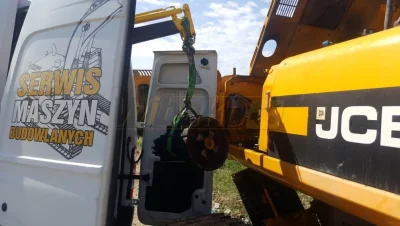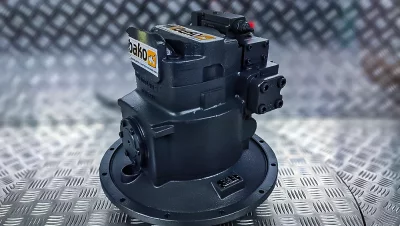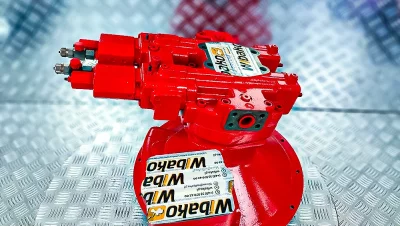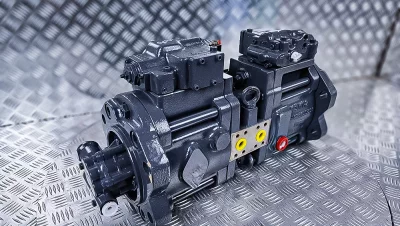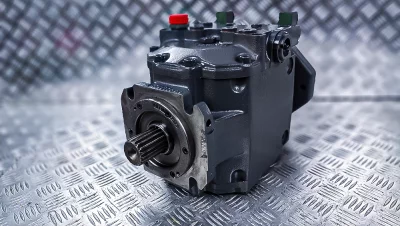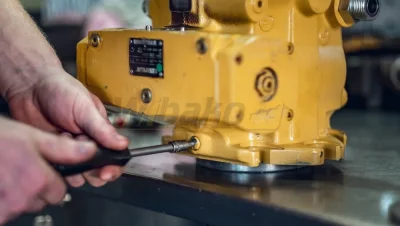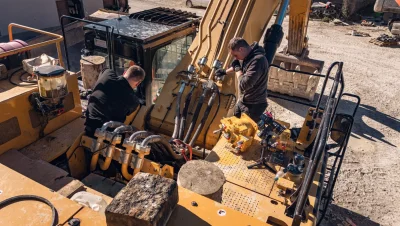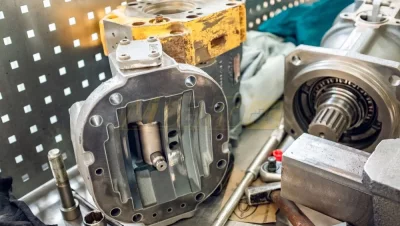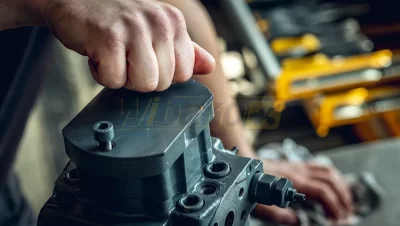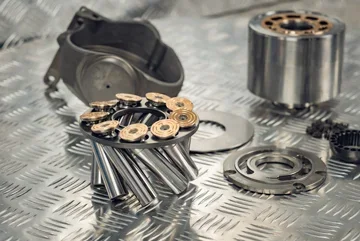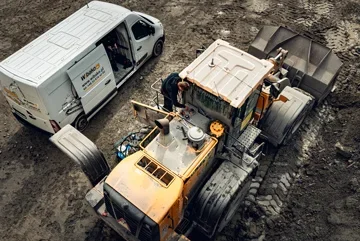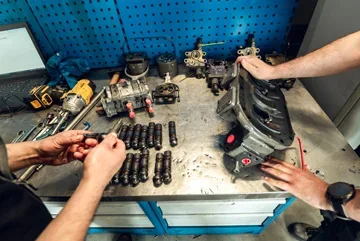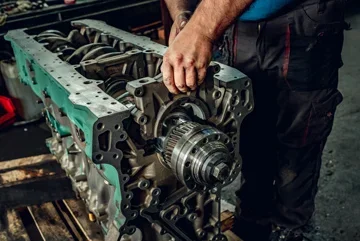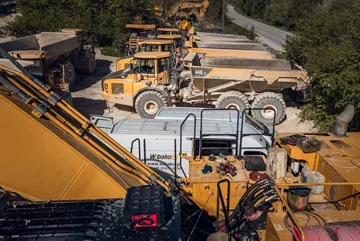What does the application of modern technologies in traditional construction equipment look like?
Modern technologies play a key role in many areas of life today. The ubiquity of the Internet and mobile devices, as well as access to satellite navigation, has meant that many activities have been supported, and even completely taken over by advanced IT, sensor and automation systems. This trend also does not bypass the construction machinery industry, where many manufacturers implement their software to improve machine operation and efficiency and safety.
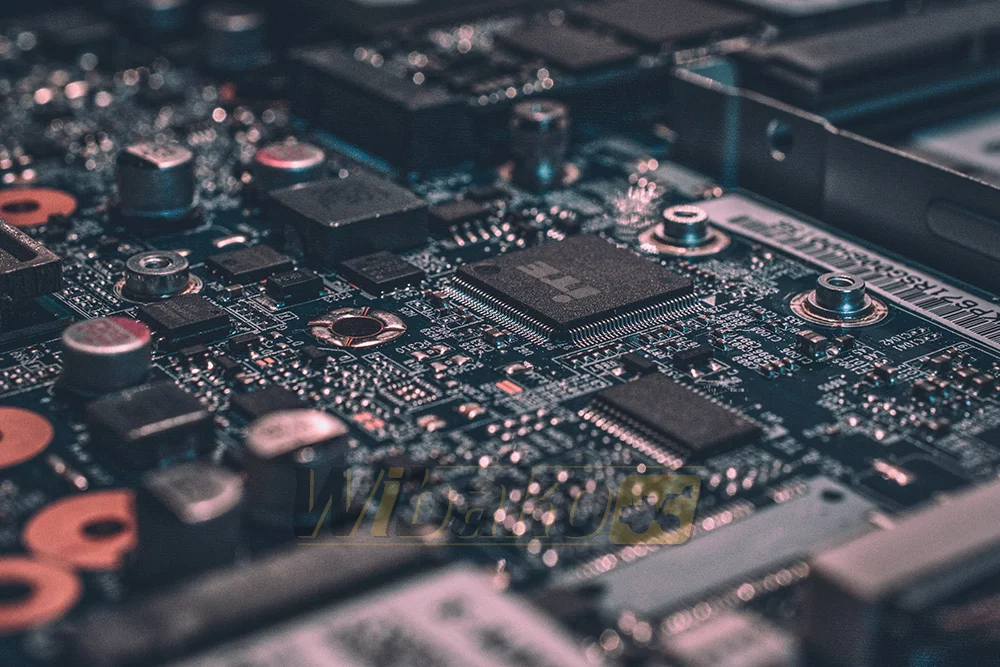
Innovations in construction machinery
The currently existing telematics systems allow for real-time monitoring of construction machinery parameters - tracking location, fuel consumption, or engine operation. This is just the tip of the iceberg of possibilities that we encounter in modern constructions. Futuristic visions in which excavators become intelligent vehicles are already a reality. Leading brands in the industry have their own software, which is constantly being developed with a view to improving performance, speed, and safety at work.
Komatsu intelligent machines
Machines from Komatsu, one of the leading manufacturers of construction equipment, have been evolving towards more and more advanced and intelligent solutions for years. Komatsu intelligent machines debuted on European markets in 2013. iMC system (intelligent Machine Control) is the application of automation technology in construction machinery. The discussed system is capable of creating accurate 3D maps of the terrain, and this is done by measuring topography using sensors and cameras.
Then the collected data are used to create a three-dimensional representation of the terrain and sent to the onboard computer of the excavator or bulldozer. Based on this, the excavator automatically controls the hydraulics, which guides the arm and adjusts its position to the working surface. This saves time and increases efficiency, as the operator does not have to make corrections himself, and the situation is continuously monitored by the user on the display in the cabin.
The Komatsu system turned out to be a great success and for this reason, the manufacturer decided to improve it with new functionalities. iMC 2.0 has been equipped with such capabilities as automatic tilt of the dozer blade or blade attack lock. The software, in order to be able to operate precisely, requires a connection to satellite navigation. Thanks to the use of GPS technology, sensors, cameras, and IT software, iMC allows for achieving accurate results and improving efficiency while minimizing the risk of operator errors. The Komatsu intelligent machine family includes excavators and bulldozers, and perhaps in the future, intelligent machine control systems will also be implemented for loaders or dump trucks.
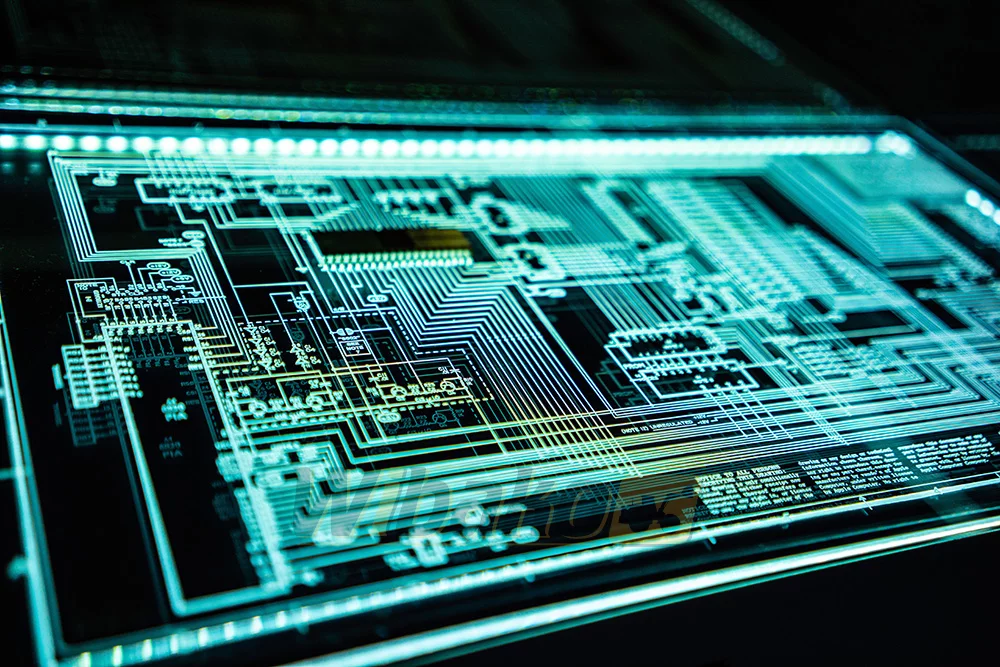
Liebherr Assistance Systems
The company Liebherr has its own advanced support and automation systems used in its machines. The systems included in the Liebherr Assistance Systems were designed to increase efficiency, precision, and safety of work on the construction site. The central telematics system of Liebherr is LiDAT, with which you can track the location of machines, fuel consumption, working hours, or technical parameters. This system has been specially designed for efficient fleet management, not only under the Liebherr brand, but it can also cooperate with constructions from other manufacturers.
Depending on the type of construction machine, Liebherr equips its constructions with dedicated systems to facilitate operation and continuously monitor working parameters. For example, dump trucks have installed software to assist in loading - Truck Loading Assistant. Thanks to it, the operator is continuously informed about the mass of the overburden, as well as how this translates into the work of the excavator, which cooperates with the dump truck during its loading - in how many buckets the load will close.
The twin program is Truck Payload Assist used in Liebherr loaders, which accurately measures the weight of the load on the loader's bucket. The lifting or lowering mechanism has also been automated with the possibility of manual programming. The Liebherr Assistance Systems include many advanced technologies that help improve the efficiency and precision of construction work, and everything depends on the machine and its dedicated functions.
iCON - intelligent CONstruction
CASE Construction Equipment does not want to stay behind Komatsu and Liebherr, which has its own team of geolocation and automatic technologies intended to support construction machines. Part of the modern machine control solutions is iCON, or intelligent CONstruction. The system consists of various individual technologies - satellite navigation, 3D modeling, or intelligent machine control. For example, CASE excavators can be supplemented with control software similar to Komatsu solutions. Among the solutions available for excavators, there are such tools as iXE CoPilot, i.e., digging motion assistance based on the surface model, which is a reference point for the bucket.
The iXE3 system is the most advanced solution from this family of software offered by iCON. Machine control here is based on a 3D model and GNSS coordinates. The remaining versions of the software are iXE1 and iXE2, i.e., poorer 3D functions, variants that will successfully work in service for less experienced operators just starting their adventure with automatic machine control systems. A comprehensive view of the construction site can be obtained using the iCON office software, which allows for terrain visualization, road mileage creation, and includes the position of all machines.
LiveLink JCB
LiveLink is a telematics service from JCB - a well-known manufacturer of construction machines, including excavators or loaders. It mainly serves to monitor the work of machines of this manufacturer. The platform provides insight into such information as machine location on the map in real time, fuel consumption level, or working time.
The software provides rich reports and analyses on machine use, which allows for assessing fleet efficiency, and then appropriately responding to potential problems and implementing improvements aimed at increasing efficiency. Telematics solutions for managing the machine park are becoming more and more common because they help reduce costs thanks to better organization of the work of individual machines, which can be planned and continuously updated thanks to them.

Caterpillar solutions
Finally, there is CAT and its fleet management solutions. The main product from this manufacturer is the Product Link System for remote monitoring, similar in assumptions to the previously presented technologies. Sending information in the case of CAT is done via a cellular network or satellite navigation.
In the machines of this manufacturer, tools belonging to the package of modern technologies are factory introduced into the construction. In addition to the aforementioned telematics system, CAT devices can be supplemented with additional functions: machine theft protection system (MSS), road analysis system (RAC) and VIMS software for preparing reports and analyses on machine maintenance based on collected data.
Similar to JCB's Livelink, the CAT fleet management system is a tool that allows for increasing efficiency, safety, and profitability of construction operations through precise planning and observing the situation on the job site in real time.
Summary - what awaits us in the future?
New technologies are having an increasingly greater impact not only on personal life, but also on the construction machinery industry, providing it with additional possibilities to improve efficiency and safety. We should expect that with the development of technology, more advanced control systems and work data reading will also start to appear in construction machines. The rapid development of Artificial Intelligence (AI) also raises the question of its application in the construction industry.
Perhaps operators will soon be given machines equipped with computers, the operation of which will consist in entering appropriate commands into the AI language model, which will then set the work parameters for e.g. an excavator and automatically perform it? Not so long ago, it was hard to imagine operating a machine arm through a 3D model displayed on the screen in the cabin, and today it is already a reality.



